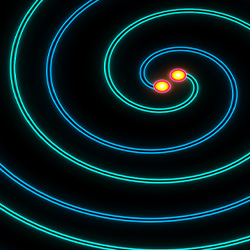Gravitational Wave Detectors
 The first direct measurement of gravitational waves occurred on September 14, 2015, one century after Albert Einstein formulated the general theory of relativity. Since then, about 90 gravitational-wave sources have been detected by the LIGO-Virgo-KAGRA collaboration. Detecting these minute spacetime fluctuations requires an accurate interferometric measurement of the kilometer-scale distance that separates mirrors used as test masses in free fall. Current leading detector sensitivity is at the level of one part in 1021 or better, with a dynamic extension of more than twelve orders of magnitude. The exploration of the gravitational Universe is now underway, current ground-based gravitational wave detectors are approaching their full potential, and third generation interferometers are now being designed. Ground-based gravitational wave detectors LIGO, Virgo, and KAGRA rely on key leading technologies. This Special Topic collection of papers illustrates the present and possibly future contribution of many different fields of physics to the detection of gravitational waves with Earth-bound detectors.
The first direct measurement of gravitational waves occurred on September 14, 2015, one century after Albert Einstein formulated the general theory of relativity. Since then, about 90 gravitational-wave sources have been detected by the LIGO-Virgo-KAGRA collaboration. Detecting these minute spacetime fluctuations requires an accurate interferometric measurement of the kilometer-scale distance that separates mirrors used as test masses in free fall. Current leading detector sensitivity is at the level of one part in 1021 or better, with a dynamic extension of more than twelve orders of magnitude. The exploration of the gravitational Universe is now underway, current ground-based gravitational wave detectors are approaching their full potential, and third generation interferometers are now being designed. Ground-based gravitational wave detectors LIGO, Virgo, and KAGRA rely on key leading technologies. This Special Topic collection of papers illustrates the present and possibly future contribution of many different fields of physics to the detection of gravitational waves with Earth-bound detectors.
Topics covered include, but are not limited to:
- New complex optical schemes based on modified Michelson interferometers to achieve improved sensitivity.
- Quantum optics devices to provide improved coherent light sources, and the development of squeezed states to improve detector sensitivity.
- Materials with low mechanical dissipation to reduce thermal random motion in the free test masses, and the architectures for their suspensions.
- Development of new high-reflectivity coatings.
- Improvement in special purpose sensors to characterize the detector and to identify the remaining sources of noise.
Guest Editors
Francesco Fidecaro, Università di Pisa
David McClelland, The Australian National University
Matteo Barsuglia, APC-CNRS
Sheila Rowan, University of Glasgow
Jess McIver, The University of British Columbia
